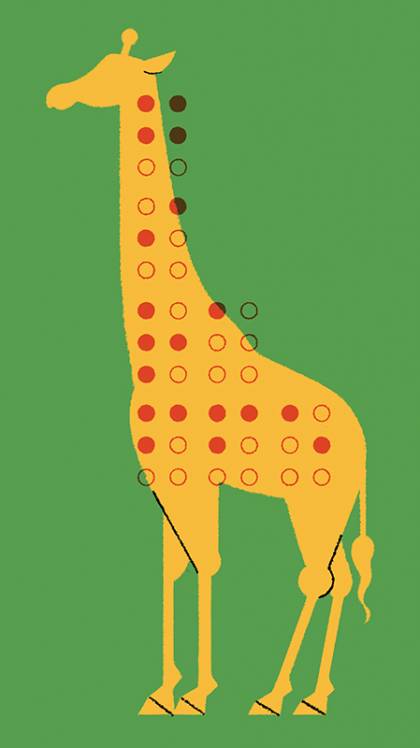A question for the reader: How do you describe the physical appearance of an elephant? Now, a slightly more complex question: Among a parrot, giraffe, and ostrich, which is least like the other two?
How do we know the answers? The easy explanation is by sight. But how would people who have been blind from birth answer? Perhaps they would describe an elephant as large and gray or a parrot as different from the other two because that's what they learned from a verbal description. At least, that's the theory that has prevailed since the thought experiments of 17th-century philosophers like John Locke, who argued that a blind person couldn't possibly understand concepts such as light, color, or appearance if they have not seen them directly.

Image credit: Matt Harrison Clough
However, new research from the Department of Psychological and Brain Sciences suggests that people born blind have a rich understanding of visual concepts that is not based solely on what they've been told, say Assistant Professor Marina Bedny and her co-researcher, doctoral candidate Judy Kim. Together they published a study earlier this year in the Proceedings of the National Academy of Sciences that challenges Locke's theory and the scientific assumptions that followed him.
"This was really exciting because there isn't a lot of work on what blind individuals know and can reason about what they can't see," Kim says. "Philosophers have argued about it for a long time, but not many people have actually asked blind people how they think about things."
Bedny and Kim asked both sighted and congenitally blind participants to order and sort cards, each representing an animal, according to size, height, shape, color, and texture. They found that participants shared a lot of knowledge on most physical characteristics within animal groups—such as fish, birds, reptiles, and land mammals—for instance, that fish have scales and fins and that birds have feathers and wings. There was somewhat less agreement regarding distinctions between animals within those groups, such as the height difference between elephants and giraffes. They also inquired about the animals most different among groups of three and found that the majority of blind participants separated, for example, the giraffe from the parrot and ostrich, while the same proportion of sighted subjects called out the parrot. (Which did you choose?) Bedny and Kim suggest that blind participants choose the giraffe because they draw inferences about its group—large, four-legged mammals—and rely on other knowledge, such as its living habitat, more than on the memory of a verbal description they may have heard of the animal.
The greatest difference between sighted and blind participant responses occurred when sorting animals by color. That is not to say that color lacks meaning for blind people. In a seminal study published in 1985, Barbara Landau—now a Johns Hopkins professor of cognitive science—found that a blind child understands that colors are physical properties and not mental phenomena (that is, a cup can be green, but an idea cannot). Other studies have revealed that blind people understand that "warm" colors like red and orange are different from "cool" colors such as green and blue. "We wanted to extend this work further and find out what blind adults understand about visual concepts," Kim says.
Kim is continuing to build upon these studies with her own research. "We're asking blind people to explain, Why do you think this polar bear has the color that it does? and finding that even if they don't know the actual colors of objects, they have sophisticated knowledge about how color works," she says. "Some blind participants answer that polar bears are black because they live in the Arctic and black absorbs heat. Sighted people are more likely to say that they are white and then explain that this is also because they live in the Arctic, and they need to camouflage in the snow." (In fact, a polar bear's outer coat is transparent, and their skin is black, theoretically for the reason given by the blind individuals.)
Bedny acknowledges that their research on blind individuals' knowledge of animal appearance "just scratches the surface." It's part of a much larger body of work taking place in her Neuroplasticity and Development Lab at Johns Hopkins where for 10 years, Bedny says, her team has been studying "which things blind and sighted people share, which they don't share, and why." The answers may very well help us understand how people—with or without vision—acquire and process knowledge about the world.
Posted in Science+Technology









